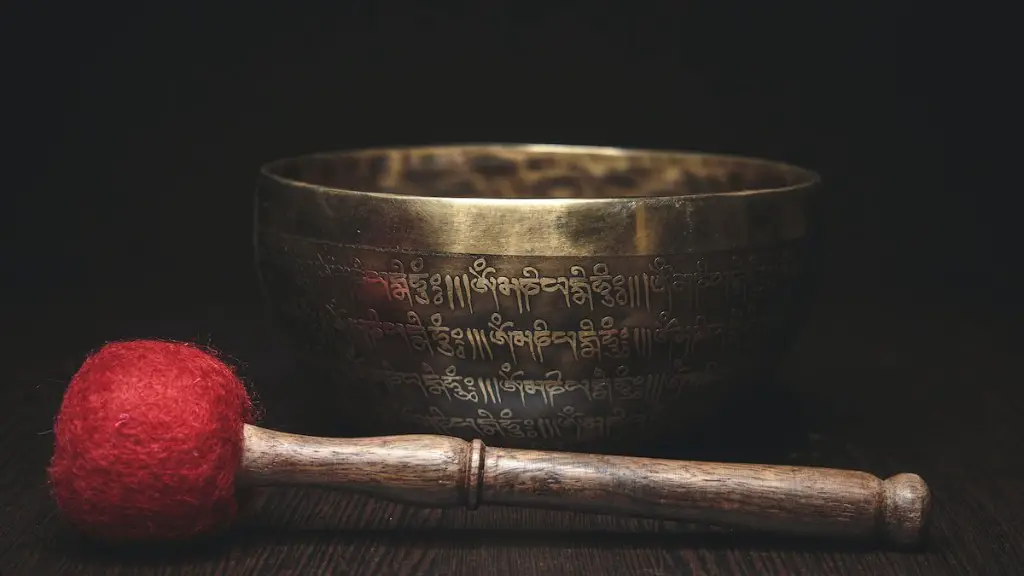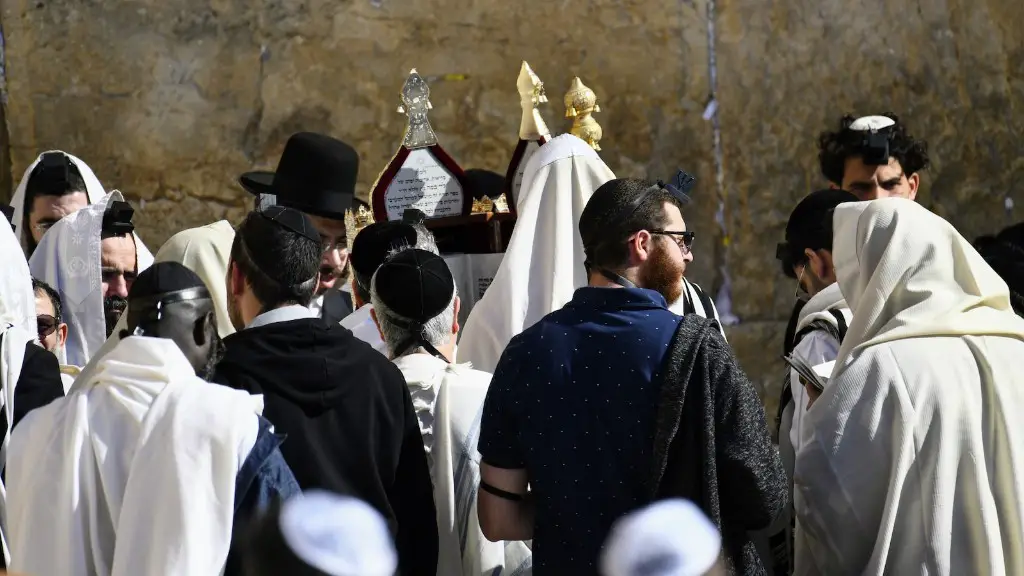Understanding Judaism and its Worship Place
When people hear the word Judaism, they often associate it with religion, however, the practice is much more than just a religion. Judaism is an entire culture and way of life for the Jewish people. Historically, it has been based on the belief in one God and the practice of Jewish law. In Judaism, God is the basis and root of all things in the world. With its monotheistic belief, it also places a heavy emphasis on personal piety and communal responsibility.
The worship place of Judaism is known as a synagogue. The synagogue is a place of gathering, learning, and prayer. It is a place where people of all ages come together to celebrate, share ideas, and deepen their Jewish identity. The synagogue is a communal space that serves as a reminder of the nation’s history, and is also a place for educational, social and religious activities.
The synagogue is the most important Jewish religious institution which houses the Torah, the holy scriptures which Jews revere. It is also the primary place for prayer, learning and gathering together. There are many different types of synagogues, from the traditional Orthodox synagogue to the Reform synagogue, and each type has its own services and traditions. Some of the most popular services offered at a synagogue are prayer, reading from the Torah, and spiritual instruction from the rabbi.
In a traditional Orthodox synagogue, services often involve rituals such as the blowing of a shofar (ram’s horn), the chanting of prayers and the chanting of liturgy. In a Reform synagogue, services often involve more spiritually-oriented activities such as meditation and discussions on Jewish values. Services typically take place on Shabbat (the Jewish Sabbath) and on Jewish holidays. Shabbat represents the day of rest and is the most important day on the Jewish calendar.
The synagogue serves as an important symbol of continuity and connection with the past and present. It is a unifying force that binds the community together. Through services and activities, the synagogue is a place where Jews can come together to celebrate their religious and ethnic heritage. It is also a place where Jews come together to study religious texts, to debate and discuss matters of faith, and to engage in other religious rituals.
In addition to being a place for religious observance, the synagogue is an important part of the life of the Jewish community. It is a center for many social and cultural activities, such as charity events and classes. The synagogue is also a place for Jewish families to gather for special meals, holidays, and other celebrations.
The synagogue has been an integral part of Jewish life for thousands of years. It has served as a place of worship, gathering, and learning. It is a central element in Jewish culture, providing a place where Jews can come together, share in prayer and study, and celebrate their heritage.
What Are the Different Types of Synagogues?
The types of synagogues found around the world vary, ranging from the traditional Orthodox synagogue to the Reform synagogue. While there are many different types of synagogues and the rituals and customs may vary, there are some common elements that all synagogues have in common. Synagogues typically have an Ark to store the Torah scrolls, a lectern for the rabbi to read from, a bema or bimah where the sermon is read from, and pews for people to sit at during services.
The Orthodox synagogue is generally the most traditional type and is associated with the most religious doctrines and practices. Service in an Orthodox synagogue is typically quite formal and there are many rituals and observances. In addition to the Torah readings, services in an Orthodox synagogue involve much chanting and singing and include blessings. The Reform synagogue is seen as more “modern” and is associated with less rigorous and formal religious practices. Services in a Reform synagogue are generally more casual and involve much less strict adherence to traditional rituals and customs.
A Conservative synagogue lies somewhere between the Orthodox and Reform traditions. It is often seen as the most contemporary of the traditional synagogues and combines elements from both Orthodox and Reform practices. Services in a Conservative synagogue usually involve some element of chanting and singing, but are often less strict and involve less of the traditional rituals and customs.
The Reconstructionist synagogue is the most modern of the traditional synagogues. It combines aspects of all of the other synagogues and focuses on creating a holistic and contemporary Jewish spiritual experience. Services in a Reconstructionist synagogue involve less of the traditional rituals and customs and are more relaxed. They often include discussions of current ethical and social issues, as well as secular readings and art.
Finally, there are also more modern, non-traditional Jewish worship groups, such as the Jewish Renewal movement, which focus on spiritual exploration and creativity. These movements combine traditional and contemporary practices and often involve more experiential and emotionally-driven elements. These movements often include music, chanting, meditation, and other forms of artistic expression. Regardless of the type of synagogue, it is a place of worship, gathering and learning for the Jewish people.
What Are the Laws and Practices of a Synagogue?
According to traditional Jewish law, or Halakhah, a synagogue must have at least 10 adult males, or a quorum, in order to conduct a service. The quorum must also have a mezuzah on the door in order to denote the space as a place of worship. The mezuzah is a religious object that is inscribed with a statement of faith. It is typically affixed to the entrance of a synagogue. Other specific rituals and customs must also be observed when in the synagogue such as the kindling of candles and the reciting of certain prayers.
Specifically, men must always wear a kippah or yarmulke, a traditional skullcap worn during prayer and study. Women traditionally pray with their head covered although this is not compulsory. Shoes should also be removed upon entering the synagogue out of respect for the space. It is also considered important to keep the space quiet, as a sign of respect to prayer. During the service, activities such as reading the Torah are conducted and the rabbi or cantor may lead the prayer. It is traditional for the rest of the congregation to participate in the prayer.
The synagogue also serves an important role in the life of the Jewish community. It is an important gathering place for Judaism-related educational, social, and charitable events. Synagogues are also often used for weddings, bris (ritual circumcision), bar mitzvah (religious coming of age ceremony) and other important life events.
What Are the Different Kinds of Prayers in the Synagogue?
During the service in a synagogue, the main liturgical prayers are known as the Amidah and Kaddish. The Amidah is a series of 19 benedictions written by the sages of ancient Israel. It is recited in a standing position and includes praise and supplications to God. Kaddish is a prayer of mourning and praise to God and is commonly recited when a person grieves the passing of a loved one.
The Kaddish is also read daily during the mourning period, which is typically a period of eleven months. The Kaddish prayer is read three to five times a day in a synagogue, and is recited either by the mourners or by the rabbi. It is traditional for the mourners to stand when the Kaddish is read, as the prayer is seen as a way of showing respect for the dead.
Prayer is an important part of the synagogue service, and a special, separateminyan prayer service is often held for a quorum of ten or more people. A prayer shawl, known as atallit, is worn when leading services, and the prayer book, known as the siddur, is used during the services. Traditional Jewish prayer is often accompanied by Jewish music known as Nusach, which typically includes the chanting of the Psalms.
What Are the Repercussions of Not Following Synagogue Etiquette?
Synagogues have many rules and regulations that must be followed in order to maintain respect for the space. Not following these rules can often have dire consequences for the individual and could be seen as a grave offense. For instance, if a person were to speak or make a noise during the service, they would be asked to leave the sanctuary. Similarly, if a person were to enter the synagogue after the Kaddish prayer has already begun, they would not be allowed to join in the prayer.
Synagogue etiquette is also important in other aspects of synagogue life. For instance, eating and drinking, headphones, and cell phones are not allowed in the synagogue, and it is important to be mindful of other people’s comfort and space during services. Additionally, it is important to dress appropriately when entering a synagogue, and women should always cover their heads.
Finally, it is important to always behave with respect in a synagogue. This means listening to and following instructions from the rabbi or other religious leaders, displaying proper decorum during services, and refraining from behavior that could disrupt the sanctity of the space.
What Are the Different Ethical Aspects of Synagogue Life?
It is the role of the rabbi in a synagogue to educate and guide individuals on ethical and moral principles. In general, the idea is to live according to the laws of the Torah, which provides guidelines on how to live a good and ethical life. The synagogue provides a space for individuals to learn and grow, and to gain a better understanding of their own values and beliefs.
Synagogue life centers around the idea of community and mutual responsibility. Respect, empathy and humility are qualities that are seen as the basis of any activity performed in the synagogue, and in life in general. Synagogue life is also built upon the ideals of justice, righteousness, and peace. These values are key in the idea of Tikkun Olam, which is seen as the responsibility of Jews to care for the world, and to act in a moral and responsible way.
Finally, synagogue life is based on the concept of Tzedek, or righteousness. This is an important Jewish idea which is often defined as “doing the right thing”. It is a concept which implies living in a just and ethical way, and it is an important aspect of synagogue life.
What Is The Role Of Charity In Synagogue Life?
Synagogues often play an important role in providing support to those in need. It is an important part of Jewish tradition to help those who are suffering or have less fortunate circumstances. As such, acts of charity such as food pantries, services for the homeless, or support for those in poverty, can often be found within a synagogue. Many synagogues are also part of larger religious organizations which further support acts of charity.
The concept of charity is also encouraged through various other activities within a synagogue. Jews are encouraged to donate generously to various charitable causes, and often support organizations both in Israel and beyond. For example, Jews are encouraged to donate to organizations that provide medical aid, education, or support for disadvantaged communities.


